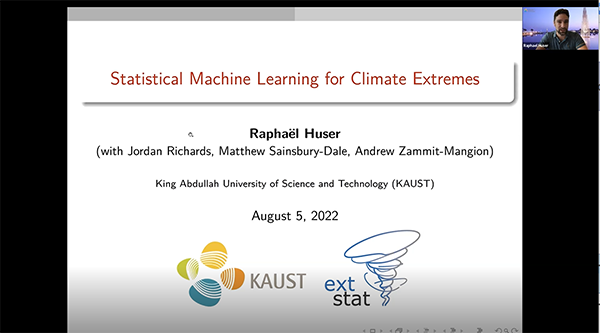High-dimensional extreme quantile regression using partially-interpretable neural networks
Presenter
October 5, 2022
Event: Climate and Weather Extremes
Abstract
Risk management for extreme wildfires requires an understanding of the mechanisms that drive both ignition and spread. Useful metrics for quantifying such risk are extreme quantiles of aggregated burnt area conditioned on predictor variables that describe climate, biosphere and environmental states, as well as the abundance of fuel. Typically, these quantiles lie outside the range of observable data and so, for estimation, require specification of parametric extreme value models within a regression framework. Classical approaches in this context utilize linear or additive relationships between predictor and response variables and suffer in either their predictive capabilities or computational efficiency; moreover, their simplicity is unlikely to capture the truly complex structures that lead to the creation of extreme wildfires. In this paper, we propose a new methodological framework for performing extreme quantile regression using artificial neutral networks, which are able to capture complex non-linear relationships and scale well to high-dimensional data. The "black box" nature of neural networks means that they lack the desirable trait of interpretability often favored by practitioners; thus, we combine aspects of linear, and additive, models with deep learning to create partially interpretable neural networks that can be used for statistical inference but retain high prediction accuracy. To complement this methodology, we further propose a novel point process model for extreme values which overcomes the finite lower-endpoint problem associated with the generalized extreme value class of distributions. Our approach is applied to U.S. wildfire data with a high-dimensional predictor set and we illustrate vast improvements in predictive performance over linear and spline-based regression techniques.
